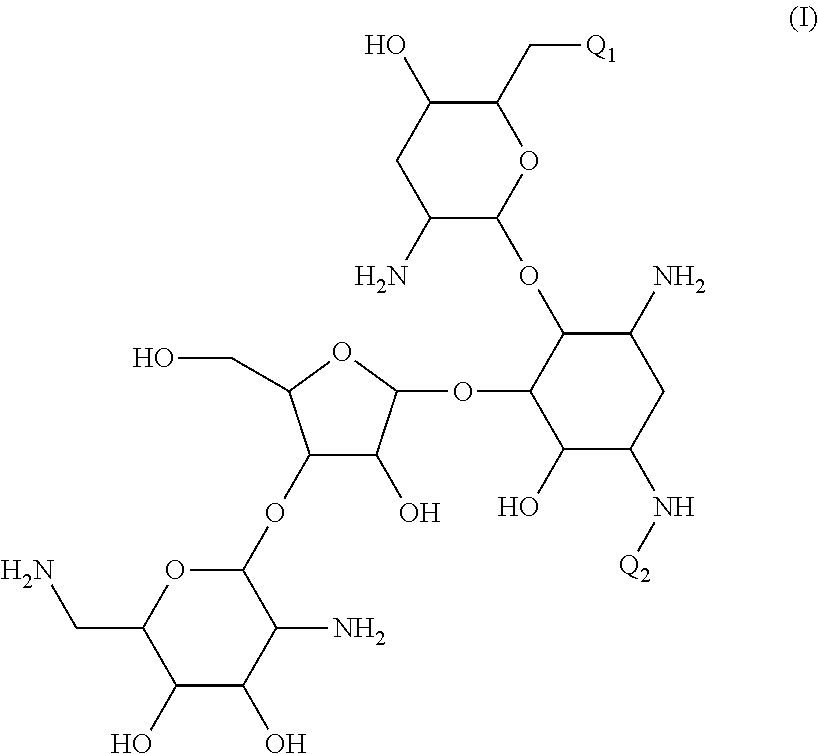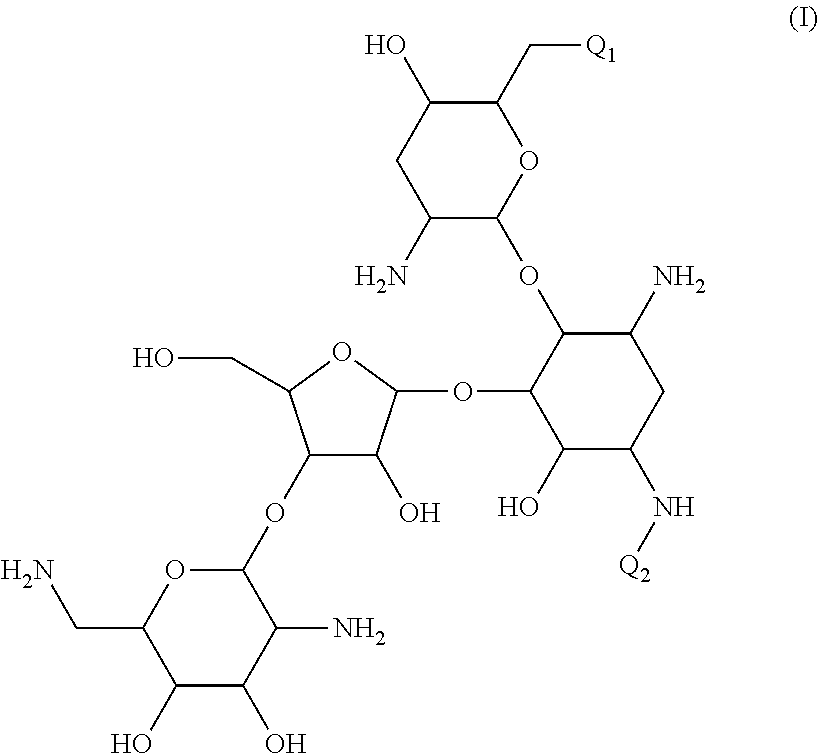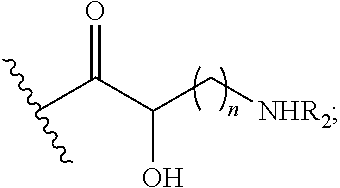Antibacterial aminoglycoside analogs
a technology of aminoglycosides and aminoglycosides, which is applied in the field of aminoglycoside compounds, can solve the problems of difficult purification of proteins, inability to remove single alpha helix or beta sheet and use it in drug screening, and major limitation of classical high throughput screening of biologically active proteins
- Summary
- Abstract
- Description
- Claims
- Application Information
AI Technical Summary
Benefits of technology
Problems solved by technology
Method used
Image
Examples
example 1
[0125]
[0126]To a stirring solution of paromomycin sulfate 1 (76.0 g, 84 mmol) in H2O (209 mL) and THF (1084 mL) at 0° C. was added an aqueous solution of sodium carbonate (254 mL, 218 mmol, 0.86 M), followed by the dropwise addition of benzyl chloroformate (120 mL, 840 mmol). NaHCO3 (70.6 g, 840 mmol) was then added and the reaction was stirred for 3 hr. The organic layer was separated and concentrated (to about 800 mL), diluted with EtOAc (400 mL) and dripped into hexane (9 L). The resulting precipitate was collected by filtration to yield 2 (69.85 g, 54.36 mmol, 65%): MS m / z calcd for C63H75N5O24 1308.5 (M+Na+). Found 1308.6.
[0127]
[0128]Zinc chloride (59.2 g, 434 mmol) was dissolved in benzaldehyde (440 mL, 4344 mmol) to give a yellow solution, and the reaction was stirred for 5 min. A solution of 2 (69.85 g, 54.3 mmol) in benzaldehyde (440 mL) was then added and the reaction was stirred for 7 hr. The reaction mixture was diluted with EtOAc (2 L) and washed with 0.1M EDTA disodium...
example 2
[0159]
[0160]To a stirring solution of 16 (275 mg, 0.268 mmol) in DMF (3.5 mL) at 0° C. was added N-Cbz-2(S)-hydroxy-3-amino-propionic acid (70 mg, 0.294 mmol), followed by PyBOP (167 mg, 0.321 mmol) and DIPEA (0.122 mL, 0.696 mmol) and the reaction was stirred with warming to room temp until complete (by LC-MS). The reaction mixture was diluted with AcOH (1 mL) and was loaded onto a 2-inch reverse phase HPLC column to yield 19 (337 mg, 0.208 mmol, 77.6%): MS: m / z calcd for C83H95N7O27 1645.7 (M+Na+). Found 1645.7.
[0161]
[0162]To a stirring solution of 19 (335 mg, 0.206 mmol) in AcOH (8.3 mL) and water (2 mL) was added Pd(OH)2 / C (348 mg) and the reaction was stirred under a hydrogen atmosphere for 2 hr. Additional Pd(OH)2 / C was added and the reaction was stirred under a hydrogen atmosphere for 2 hours. The reaction was filtered through a 0.45 μm PVDF filter, diluted with water (100 mL) and lyophilized to yield 20 as its acetate salt, which was purified by reverse phase HPLC (Method 2)...
PUM
| Property | Measurement | Unit |
|---|---|---|
| molecular weight | aaaaa | aaaaa |
| hydrophobic | aaaaa | aaaaa |
| hydrophilic | aaaaa | aaaaa |
Abstract
Description
Claims
Application Information
 Login to View More
Login to View More - R&D
- Intellectual Property
- Life Sciences
- Materials
- Tech Scout
- Unparalleled Data Quality
- Higher Quality Content
- 60% Fewer Hallucinations
Browse by: Latest US Patents, China's latest patents, Technical Efficacy Thesaurus, Application Domain, Technology Topic, Popular Technical Reports.
© 2025 PatSnap. All rights reserved.Legal|Privacy policy|Modern Slavery Act Transparency Statement|Sitemap|About US| Contact US: help@patsnap.com



